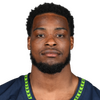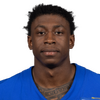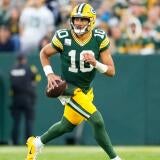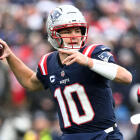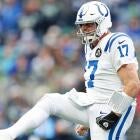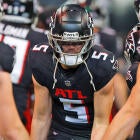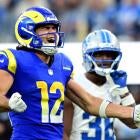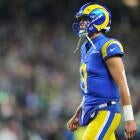2023 NFL Draft: Six things experts got wrong, including Texans and Seahawks plans, plus the tight ends
Houston took a quarterback and Seattle made a surprise selection early

Every year in the wake of the NFL Draft, those of us in the media and the draft industrial complex get out the red pen and start assigning grades to teams based on their selections and their process. It's a fun exercise, even if it's one that engenders a lot of complaints. (No, we don't know how the players selected will pan out for a few years; but we do know what information teams had at the time of the draft, how their picks aligned with consensus opinions, and whether they under- or over-valued certain positions.)
To be fair in this process, well, we've got to grade the media and the experts as well. With that in mind, here's a look at a few things the experts got wrong about the 2023 NFL Draft.
'The Texans aren't drafting a QB at No. 2'
Swing and a miss on this one. DeMeco Ryans and Nick Caserio did an excellent job of keeping a lid on who the team was interested in with the No. 2 overall selection, so much so that other teams were telling their friends in the media that this was the most unpredictable draft in years because nobody knew what the Texans were going to do with the second pick in the draft. After initially assuming the Texans wanted a quarterback, all of the smoke in the weeks leading up to the draft was about how the team did not want Stroud and would instead select a defensive player -- whether that be Will Anderson Jr. or Tyree Wilson. Instead, Houston took Stroud, then traded up from No. 12 to No. 3 to land Anderson as well.
The Seahawks at No. 5
In the lead-up to the draft, most observers had the Seahawks going in one of two directions: Georgia defensive tackle Jalen Carter, or a quarterback. But the Seahawks surprised pretty much everybody by taking a cornerback, even after having landed two starting corners in the later rounds of last year's draft. (Tariq Woolen and Coby Bryant.) Not only did Seattle take a corner, it did not take the one some thought would be the first off the board, opting for Devon Witherspoon rather than Christian Gonzalez. And Seattle didn't just pass on a quarterback in the first round, but did not take one at all, further solidifying Geno Smith's place as the starter under center -- at least for this year. (His contract is pretty easy to get out of in the event he does not live up to last year's standard.)
Will Levis is a first-round pick
Three passers went in the first four picks, with Bryce Young going No. 1, Stroud coming off the board at No. 2, and Anthony Richardson landing at No. 4. But then the remaining 27 picks on Day 1 were non-quarterbacks. In the days leading up to the draft, Levis at one point became favored to be the second pick in the first round, but he didn't hear his name called until the second pick of the second round. Even if there had been the usual 32 first-round picks, Levis still landed outside the top-32, a true second-rounder.
Everything about the tight end class
For months, we heard about the excellence of this tight end class, and how the relative weakness of the draft at some other positions would lead to more than a few of these guys getting selected in the first round. But that's not how it played out. In a bit of a surprise, Dalton Kincaid was the only tight end selected on Day 1. That was surprising not just because he was the only tight end drafted on Thursday, but also because most had Michael Mayer as the top tight end in the class. But Mayer also wasn't the second tight end selected. He went behind Sam LaPorta as well. Oh, and Darnell Washington lasted until the tail end of the third round, with Kincaid, LaPorta, Mayer, Luke Musgrave, Luke Schoonmaker, Brenton Strange, and Tucker Kraft all going ahead of him.
Bijan Robinson is in a class of his own
Robinson went in the first round, as many expected. He also went in the top 10, as fewer (but still many) people expected. But he wasn't the only running back drafted on Day 1, or even in the top 12 picks. The Detroit Lions traded back from No. 6 to No. 12 and took Jahmyr Gibbs. The thesis of Robinson as such a high draft pick was that he was so much better than other running back prospects that you had to take him that early or miss risking out on a player anywhere close in quality. Clearly, at least one team in the league did not view things that way.
Corners and edge rushers
Gonzalez was not only not the first corner off the board, but he wasn't the second corner drafted, either. Emmanuel Forbes went ahead of him. And both Forbes and Deonte Banks went ahead of Joey Porter Jr., who lasted until the second round. Julius Brents went in the middle of the second round, while Garrett Williams lasted until the middle of the third and Kelee Ringo and Clark Phillips III stayed on the board until the fourth.
Anderson and Wilson were, as expected, the first two edge rushers drafted, but despite late heat that Wilson would leapfrog Anderson, that didn't happen. And the next edge guy drafted was Will McDonald IV, with both him and Myles Murphy getting drafted ahead of Nolan Smith. That group, plus Felix Anudike-Uzomah, Derick Hall, and Isaiah Foskey, all went ahead of Keion White, who received a green room invite for the draft.




